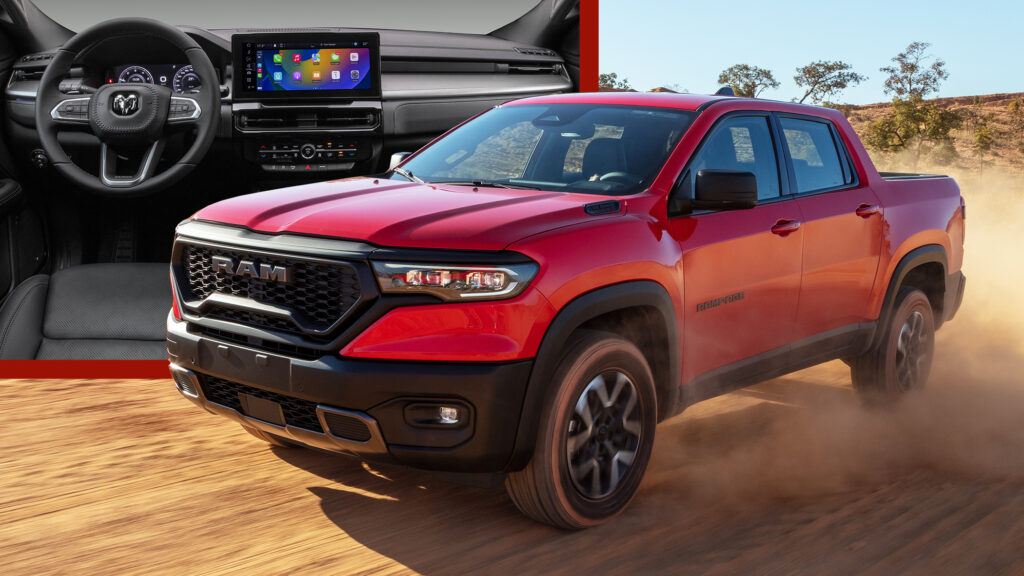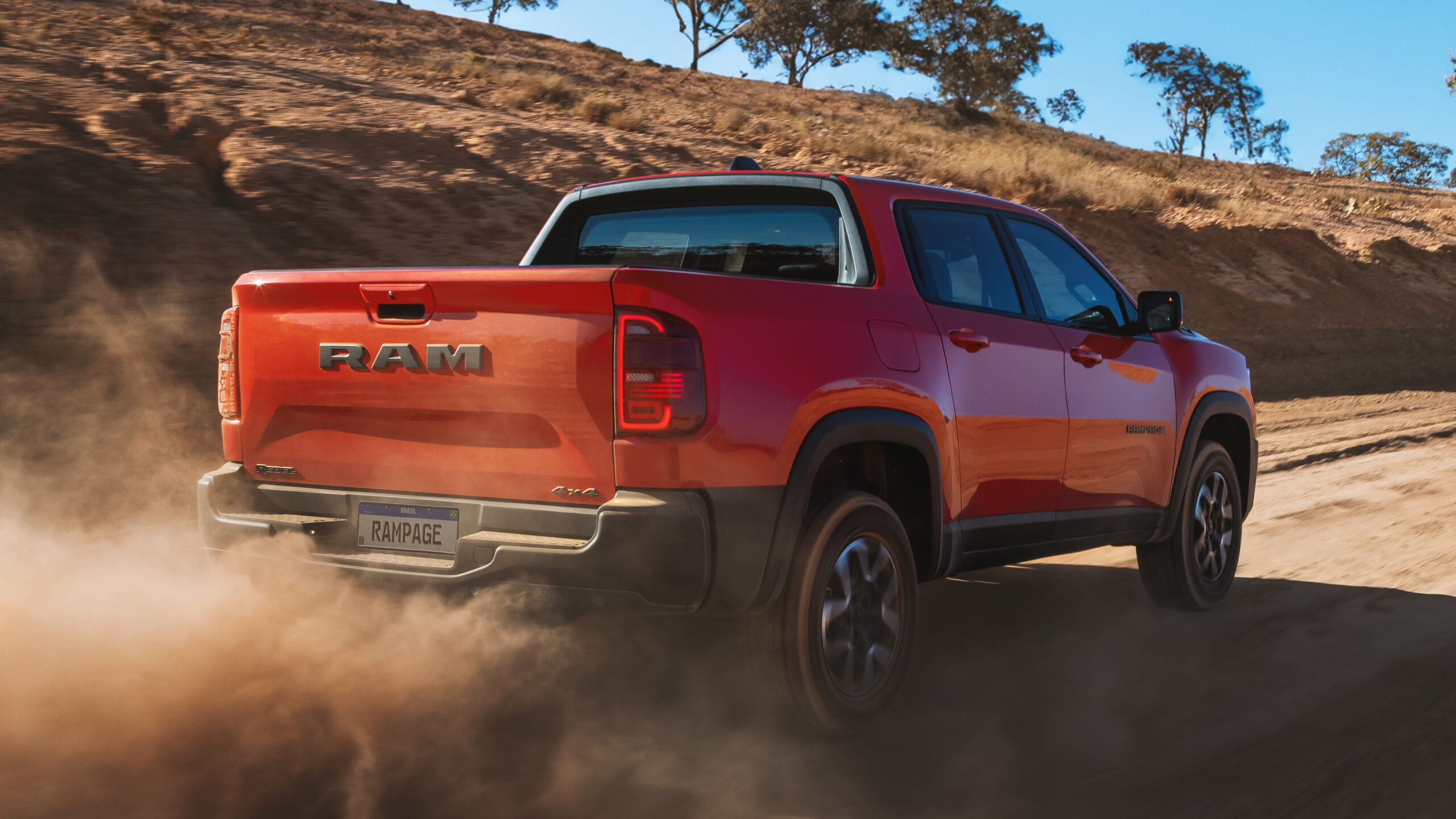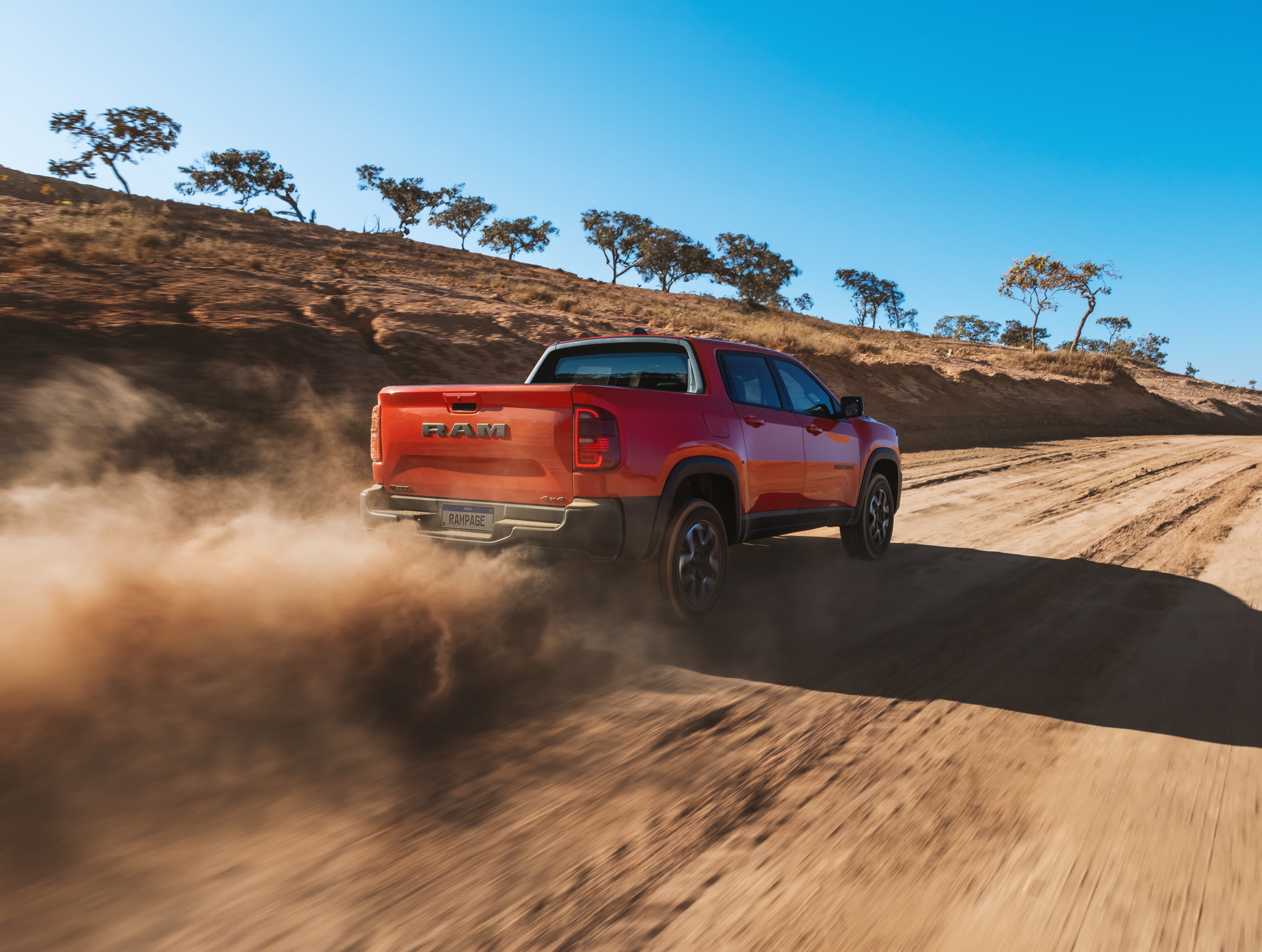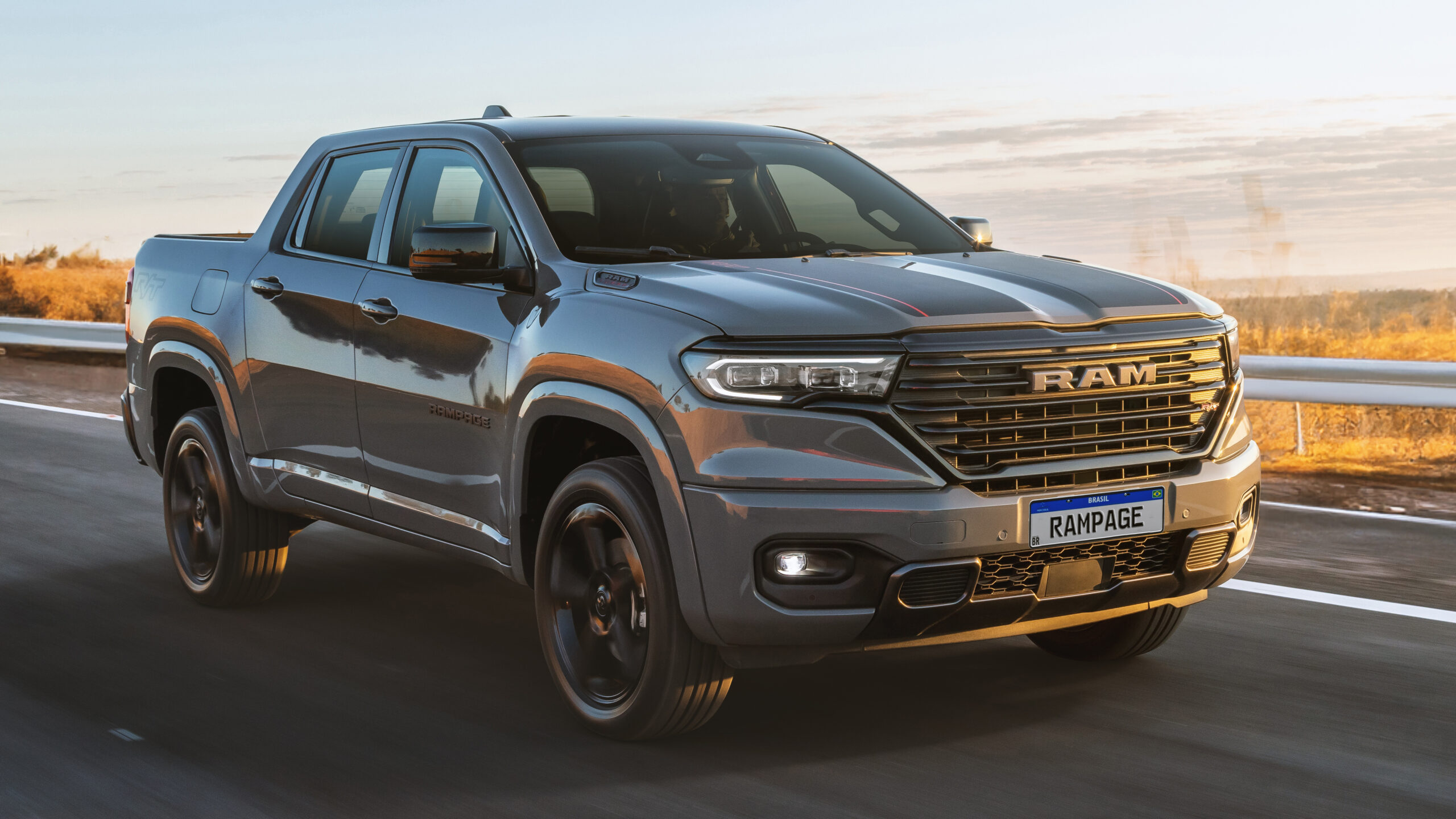Ram has officially launched the all-new Rampage, its first model designed and developed in Latin America. The compact pickup is available with petrol and diesel powertrains, in Laramie, Rebel, and R/T trims featuring distinct styling cues. Ram didn’t mention other markets outside Brazil and Argentina, although a North American debut of the Rampage is rumored before the end of the year.
Ram says that the Rampage development project was carried out by more than 800 engineers and technicians from South America, including more than 1.2 million hours of development. The pickup is based on the Small Wide unibody architecture which is also underpinning the Jeep Compass and Commander, as well as the Alfa Romeo Tonale and Dodge Hornet twins.
The Ram Rampage measures 5,028 mm (198 inches) long, 1,886 mm (74.3 inches) wide, and 1,780 mm (70.1 inches) tall with a wheelbase of 2,994 mm (117.9 inches). This makes it 44 mm (1.7 inches) shorter than the Ford Maverick and a full 342 mm (13.5 inches) shorter than the Ford Ranger. As a result, it classifies as a compact pickup under US standards but as a midsize pickup for South America.
More: New Ram Rampage Small Pickup Truck Is Reportedly Coming To The USA
The styling of the Ram Rampage had already been revealed in earlier teasers but we now get to see all of the details. The model was designed in South America, with input from North American designers in order to get proper Ram looks. Overall, the pickup has a strong road presence thanks to the large grille, modern LED lighting units, muscular fenders, and rugged proportions. The surfacing on the profile and the squared-off wheel arches are similar to the mechanically-related Jeep Compass but all of the sheet metal is unique to the Rampage. Another highlight is the US flag graphics on the LED taillights, proudly exhibiting the country of origin.
In terms of differentiation between the trims, the luxurious Laramie gets plenty of chrome and body-colored plastic cladding, the sporty R/T opts for stealthier glossy black accents and bonnet stripes, while the adventurous Rebel has unpainted plastic on the bumpers, wheel arches, and a unique grille. All petrol-powered models have dual exhaust pipes, communicating the extra performance.
The rear bed is covered in plastic and has a capacity of 980 lt (34.6 cubic feet), with an extra 35.4 lt (1.25 cubic feet) of in-cabin storage. The petrol-powered Rampage can carry a Maverick-beating 750 kg (1,653 pounds) of cargo, while the diesel increases that number to a Ranger-beating 1,015 kg (2,238 pounds).
Inside, the dashboard layout is similar but not identical to the Jeep Compass. The 10.3-inch digital instrument cluster is combined with a 12.3-inch touchscreen for the Uconnect infotainment which supports wireless Android Auto and Apple CarPlay. There is a separate section for the climate controls (two-zone A/C), wireless charging, a total of six USB ports, and plenty of storage compartments on the center console.
The upholstery is black leather on the Rebel, brown leather on the Laramie, and suede on the R/T, with all of them getting an electric driver’s seat. Optional equipment includes ambient lighting and a 10-speaker Harman Kardon premium sound system. In terms of safety, there are seven airbags and plenty of ADAS including adaptive cruise control with Stop&Go function.
Petrol And Diesel Options, Standard Automatic and 4×4
The Rampage is available with two powertrain options. The turbocharged 2.0-liter Hurricane four-cylinder petrol engine that is sourced from the Wrangler produces 298 hp (200 kW / 272 PS) and 400 Nm (295 lb-ft) of torque. There is also a 2.0-liter Multijet Turbodiesel producing 170 PS and 380 Nm (280 lb-ft) of torque. In both cases, power is transmitted to all four wheels exclusively through a 9-speed automatic gearbox.
The sportiest Rampage R/T with the petrol engine accelerates from 0-100 km/h (0-62 mph) in 6.9 seconds and has a top speed of 220 km/h (137 mph). The Laramie and Rebel with the same engine need 7.1 seconds for the 0-100 km/h (0-62 mph) sprint and top out at 210 km/h (130 mph). Predictably, the less powerful diesel Rampage is slower, accelerating in 10.9 seconds before reaching a top speed of 186 km/h (116 mph).
The unibody architecture is combined with McPherson struts at the front and multi-link suspension at the rear, with a new Rampage-specific setup prioritizing comfort. The sportier R/T has firmer springs and shocks, is lowered by 10 mm (0.4 inches), and rides on 19-inch alloy wheels shod in 235/55R19 tires. On the other end of the spectrum the more adventurous Rebel rides on 235/65R17 all-terrain tires, while the luxurious Laramie gets 235/60/R18 wheels. All petrol-powered Rampage trims get ventilated discs (305mm front and 320 mm rear) which are larger than in the diesel.
The Ram Rampage is produced at the Stellantis Goiana plant in Pernambuco, Brazil. Pricing ranges between R$239,990-269,990 ($50,093-56,355) in Brazil with an imminent market launch in Argentina. It remains to be seen if Ram decides on bringing the midsize pickup to the States, something that would most likely require an additional manufacturing location in order to avoid the chicken tax levied on light truck imports.








































































































































































